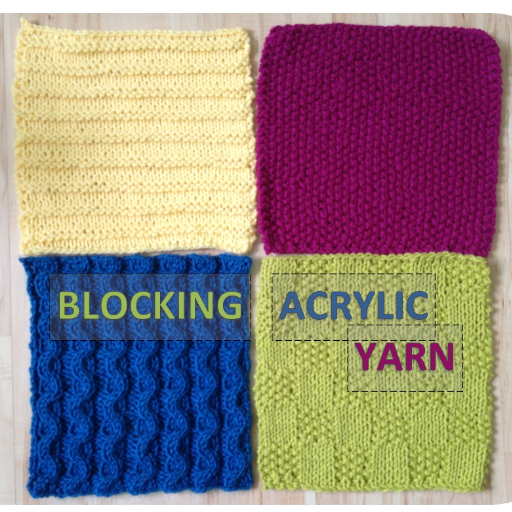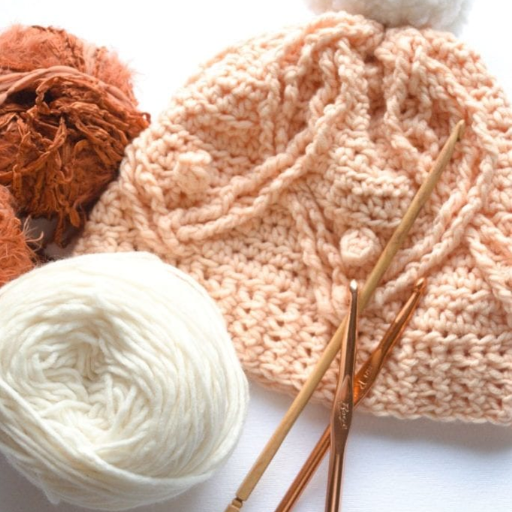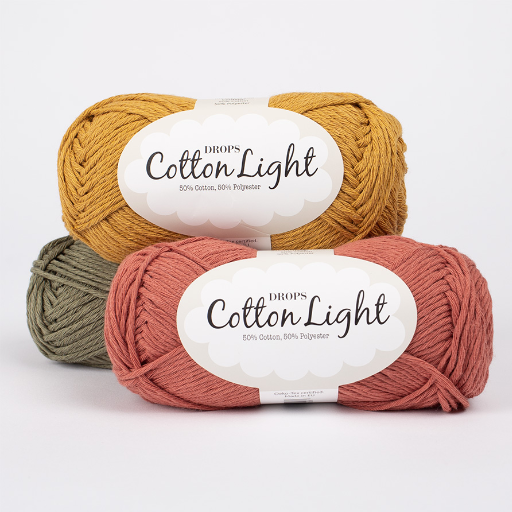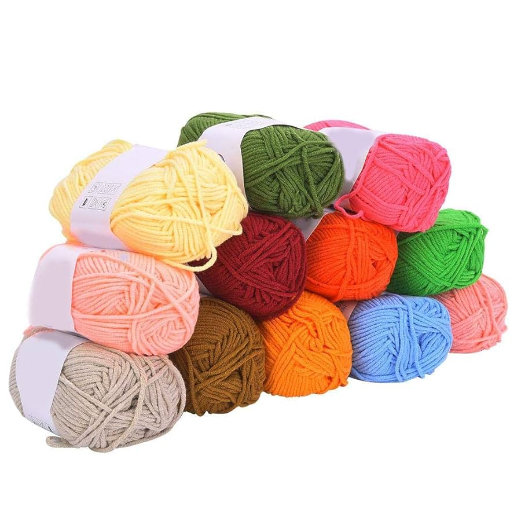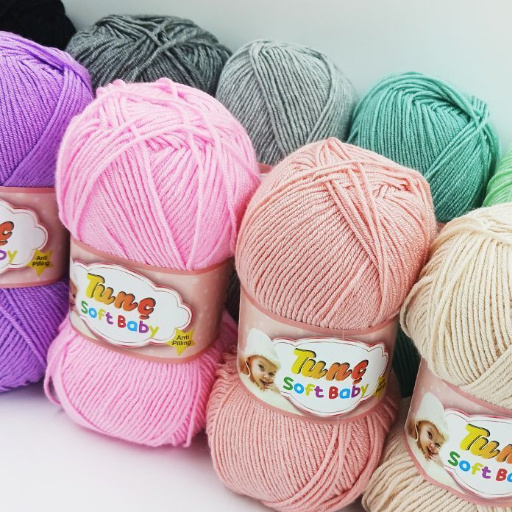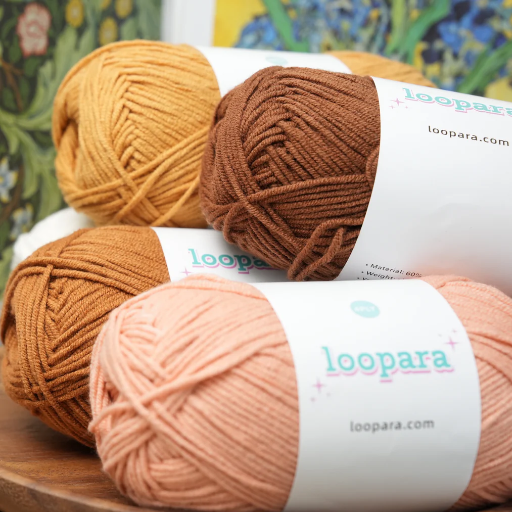Precision, speed, and flexibility are the hallmarks of industrial sewing machines, serving a wide range of applications in the textile world. Out of the many stitches used with these machines, the zig-zag stitch is particularly well known because of its effectiveness. One of the more puzzling things about this stitch is — why the bobbin thread behaves in a zig-zag fashion during the formation of this stitch.
This article tries to explain the detail issues with industrial sewing machines. More specifically, the reasons which affect the movement of the bobbin thread will be considered. The article attempts to examine the engineering concepts of the zig-zag stitch including the needle and presser foot, as well as the bobbin case. Furthermore, the interplay between tension, bobbin thread quality, machine timing, and zig-zag movements of the bobbin thread will be discussed. This blog will help the reader understand more about the zig stitch, as well as provide useful tips for improving your sewing projects, detailing the importance of these factors.
How Does a Zig Zag Stitch Work?

The zig-zag stitch works by moving the needle from side to side in a controlled, oscillating motion while the fabric is advanced by the feed dogs. This movement creates alternating diagonal stitches, allowing the thread to form a secure and flexible seam. The presser foot stabilizes the fabric, while the bobbin thread interlocks with the upper thread to complete the stitch. Proper machine timing ensures the needle and bobbin case synchronize perfectly, while thread tension regulates the tightness of the stitch. This mechanism allows for versatility in applications such as reinforcing seams, finishing raw edges, or adding decorative elements to fabric.
Understanding the Role of the Bobbin Thread
Understanding the importance of a bobbin before placing it in a sewing thread is paramount. During the sewing process, the sewing machine bobbing plays a pivotal part in forming secure and balanced stitches. The bobbin thread’s role, in a nutshell, enables stitch formation processes which are crucial to crafting any seam. The bobbin thread that is kept in the bobbin case of the machine is pulled up and down to form every stitch loop, consequently allowing each stitch to be completed. The proper stitch quality is maintained when the upper thread tension is controlled in tandem with the bobbin case screw. The stitches do tend to become uneven when the bobbin starts loosening or winding turned out to be quite improper, which can result in loose loops or threads breaking, disrupting the output quality for the worst. Threads of electric sewing machines must be compatible and in proper timing to ensure the bobbin thread does its job of creating durable seams.
Difference Between Straight Stitch and Zig Zag Stitch
The applications and functionality of the straight stitch and zig-zag stitch are remarkably different from each other in more than one aspect. This stitch type is created by the forward stroke of the machine needle which creates a rotating parallel line of continuous stitches. A straight stitch is the most widely utilized and simplest stitch type that can be used for the basic seams, topstitching, and edging. Adjusting the tension accordingly allows this type of stitch to have a sufficient level of strength for woven fabrics.
With the zig-zag stitch, a stitch is formed that has the shape of connected Z’s to facilitate the adjustable width as well as flexibility. While its elasticity makes it useful for knits, its application extends to making buttonholes, outline stitches, as well as applique work. While the straight stitch is limited in functionality by a single line of stitches, the zig-zag stitches can cut this tension more evenly across the fabric which decreases the likelihood of breakage. The specific sewing task, material, and range of motion or the steadiness needed at the seam are all critical in choosing stitches like these. Like other stitches, these serve a specific purpose in enhancing the aesthetic value of garments while also making them more durable.
Adjusting the Stitch Length for Best Results
In professional sewing, whether functional or decorative, adjusting the stitch length is vital. It determines how compact or spread out the stitches are along the fabric. For standard sewing, it is common practice to use a medium length between 2.5 to 3 mm; this is beneficial for both seams’ strength and flexibility. When sewing delicate fabrics such as chiffon or silk, the stitch length range of 1.5 to 2 mm is recommended to ensure fabric damage and maintain precision. On the other hand, thicker fabrics having more weight, such as denim or canvas, are smoother when sewn with a longer stitch length of around 3.5 to 4 mm, enabling smooth feeding and there is less bulk at the seams.
Whether adding temporary stitches or for basting stitches, having a stitch length of around 4 mm and above makes it easy to remove when needed. Boosting the appeal of the fabric can also be achieved through the use of decorative topstitching. The length for these stitches is placed between 3 mm to 4 mm. So that material type and thread tension do not yield a differing result, testing stitch length on scrap material is important. Adjustment of stitch length maintains proper tension balance, thus lessening the chances of puckering. Overall the finished product displays more strength and beauty. For those guidelines specific to your sewing machine consult your manual.
What Causes Stitch Issues with the Zig Zag Stitch?

Multiple reasons can contribute to stitching problems with the zig-zag stitch. First, a common problem can be the incorrect thread tension. If it is too tight or too loose, the zig-zag pattern may look off. Then, the selection of the wrong needle size and type might work against you because it can result in missed stitches or even damage to the fabric. Moreover, a misalignment of the thread to the fabric and the sewing machine can lead to poor outcomes. Another problem is insufficient presser foot pressure which can affect fabric feeding and irregular stitching. Finally, issues with the maintenance of the sewing machine, for example, a dirty feed dog or an unfitted bobbin case can cause an incomplete forming of clear zig-zag stitches. Thorough and regular maintenance of the machine can keep this problem in check. Testing stitches on spare fabric can also minimize the problems.
Common Problems with Bobbin Thread
Most bobbin and thread problems arise while sewing. One of the reasons could be improper placement of the bobbin which often results in tangles within the thread, uneven stitching, or may even cause the thread to bunch up beneath the fabric. A large part of these complications can be avoided if the bobbin is more accurately placed in the bobbin case and if it is wound more evenly. In addition, if the weight of the thread and bobbin differ, the stitching may be done unevenly due to inconsistencies in tension. A common problem that occurs as well is abnormal bobbin tension. This, along with other minor adjustments, can solve seamless performance. Cleaning and servicing the area around the bobbin case is just as important since lint or obstructions can result in poor stitch detailing. And finally, always check whether your bobbin is compatible with your sewing machine to mitigate any issues with the machine’s mechanisms.
How to Troubleshoot Stitch Formation
It is common to have stitch formation problems when there is incorrect needle threading, improper tensioning of threads, or anything else relevant to the needle. Start with ensuring that the upper threads and bobbin threads are appropriately and correctly threaded. Confirm that the upper thread and lower thread, that is the bobbin, are inserted in the right order and are taken up properly. Tension settings should also be made according to the type of fabric and threads. If settings are not correct, inappropriate settings can lead to slack stitching or it can sew in a tight fashion which will cause the fabric to wrinkle. Ensure that there are no damages on your needle and that it is in the best usable condition. A dull needle, or even a bent one, tends to skip stitches or sew uneven stitches. For easy sewing, ensure to use the right needle type and size for the fabric.
Ensure that the bobbin is evenly wound and the thread comes off the bobbin case without any difficulties. Remove your machine stitches and check for any lint or plastic dirt around the bobbin case and the feed dog. These kinds of objects can have a huge impact on how good the stitches come out. Test stitches should be run through a piece of fabric so that these adjustments can be perfected. Many common stitch formation issues can be eliminated of stitch formation problems can be avoided with the right type of maintenance and using the right accessories for the sewing machine.
Inspect the Bobbin for Correct Insertion
Consult the manual of your specific sewing machine model to assist with bobbin insertion. Make sure the bobbin case is clean as any dirt will affect moving parts and threads smoothly. Place the bobbin in the case the way the machine requires, commonly “unwinding” the thread counterclockwise. Lock it in place firmly so the threads do not slip out. Thread the tension slot or guide. The thread should pull easily which is important to maintain stitch quality. Lastly, do a test stitch to check that the machine works and correct any irregularities in tension. Following all of these steps will lessen stitch inconsistencies and troubleshooting errors.
How to Troubleshoot Bobbin Thread Zig Zagging?

While tension, a threading mistake, or a broken bobbin case can cause the bobbin thread to zig-zag, improper tension is most likely the culprit. Start by checking if the bobbin is wound and inserted as per the machine’s guidelines. While doing so, ensure that the thread is locked in the pub’s tension slot. Make sure the thread path in an upper thread is free from any misreads because it often negatively affects the stitch pattern. Loosen the upper thread tension and check the results. In the same step, pay attention to the bobbin case too. If it has cracks, dirt, or any signs of wear, that can interfere with feeding thread. If the problem persists, try cleaning the machine. It can be that the issue lies in the quality of the thread used in the current bobbin. Use a fresh bobbin to see the change. Always experiment with scrap fabric so that adjustments can be made after testing.
Adjusting the Upper Thread Tension
To change the upper thread tension properly, identify the sewing machine’s upper thread tension dial, which is normally found at the front or top of the machine. At the beginning, set the tension dial to a baseline mid-value which on most devices is marked as a default (ideally most sewing machines show this.) Test the stitch quality on a scrap fabric ideally similar to your project material. If the stitches appear loose on the top side, increase the tension incrementally by turning the flange to a higher number. In situations where the top thread causes excessive pulling and the fabric becomes tightly puckered, it is best to dial the machine to a lower setting to loosen it.
Upper sewing thread must be placed in all thread guides, tension discs, and the take-up lever in the right position as per the manual, otherwise this is mis-threading which would induce tension problems. Besides, remember to always clean the tension discs to allow smooth thread flow since lint or debris can clog these devices. Testing and fine-tuning the sewing machine should always be conducted with scrap fabric to avoid damaging the final project.
Ensuring the Bobbin is Inserted Correctly
To ensure the bobbin is inserted correctly, begin by consulting your sewing machine’s manual, as bobbin designs and setups vary across different models. Typically, the bobbin is placed into the case in a specific orientation—either clockwise or counterclockwise—depending on the machine’s design. Insert the bobbin into the case, ensuring the thread flows through the tension spring or slot provided. After insertion, leave a sufficient thread tail (approximately 3-4 inches) for proper pickup by the upper thread. Secure the case into the machine, ensuring it clicks into place firmly but without forcing it.
Next, hold the upper thread and manually turn the handwheel to lower the needle, allowing the upper thread to catch the bobbin thread. A loop should form, which you can then pull through the machine plate using the upper thread. Double-check that the thread paths are smooth and unimpeded, as improper positioning or threading can result in skipped stitches or tangling. Regular maintenance, such as cleaning lint and checking for damage in the bobbin area, is crucial for optimal performance.
Re-thread the Machine for Better Stitch Quality
For improved stitch quality, it is important to completely re-thread the sewing machine from the upper and lower threading parts. Start by threading the spool onto the spool pin. Make sure the spool is placed correctly as per the manufacturer’s instructions. Thread the line through all of the thread guides and the tension discs while ensuring there is a maintained level of tension during the process. Be very careful when threading the tension regulator since this affects the stitch quality.
When working on the lower thread, make sure the bobbin is aligned correctly. It also needs to be tangle free and correctly wound. Insert the bobbin into the case according to the machine specifications (either clockwise or counterclockwise) and verify the thread is free to move through the tension slot. Balanced stitching requires adequate tension in both the upper and lower threads.
Once the two systems have been threaded, lift the handwheel to pull the bobbin thread up through the needle plate. Move the upper thread and the bobbin thread to the back of the machine, leaving around 3-4 inches of thread. Test the sewing machine’s performance by doing a test stitch on a scrap piece of fabric to check the thread tension and stitch quality. If there are still problems, double-check the threading routes and check the tension settings to make sure they are correct, and refer to the user manual for what to do next. By correctly re-threading the sewing machine, breakage of thread, missed stitches, loosening or tightening in gap-filling tension, and unsatisfactory stitching will be avoided. Consistency and professionalism in stitching will be achieved.
What are the Best Practices for Using a Zig Zag Sewing Machine?

- Select the Correct Needle and Thread: Use a needle and thread appropriate for the fabric type and weight to ensure clean and even stitching.
- Adjust Stitch Width and Length: Set the zigzag stitch width and length based on your project requirements. Wider stitches work well for decorative purposes, while narrower settings are ideal for reinforcement or stretch fabrics.
- Stabilize the Fabric: Use a stabilizer or backing material when sewing lightweight or stretchy fabrics to prevent puckering or distortion during stitching.
- Monitor Tension Settings: Check and adjust the thread tension to balance the upper and lower threads. Incorrect tension can result in uneven stitches or thread breakage.
- Maintain an Even Feeding Motion: Ensure the fabric feeds evenly through the machine. Guide it gently without pulling or pushing to avoid skipped stitches or misalignment.
- Perform Routine Maintenance: Regularly clean and oil the machine as recommended by the manufacturer to prevent buildup and maintain optimal performance.
By following these best practices, users can achieve durable and professional-quality zigzag stitching across various fabric types.
Choosing the Right Thread and Needle
Thread and needle selection increases the chances of quality stitching. Threads ought to match the type of fabric and the application of sewing. Polyester threads are good for general use and would suit most purposes; however, cotton threads are the best for natural fabrics, like linen or quilting cotton, while stronger materials require heavy-duty threads like nylon or upholstery thread.
When choosing the needle, the fabric and the type of stitch need to be taken into consideration. Most woven and knit fabrics can be sewn with Universal needles, while more technical fabrics may require specialty needles. A ballpoint needle is a must for sewing with stretchy fabrics like jersey which tend to snag, while a denim needle is used for heavy fabrics as it can easily pierce through thick layers without bending.
The rule of thumb – always consider the fabric weight when matching the needle size. Lightweight fabrics should use smaller sizes (e.g. 70/10), while larger sizes (e.g. 110/18) are suitable for heavier materials. Skipped stitches from dull or tangled needles are caused by the needle not being kept in good shape, so remember to replace them often.
Testing on Scrap Fabric for Optimal Settings
Before starting any sewing project, it is essential to test the chosen settings on a scrap piece of the same fabric. This step minimizes errors and ensures optimal stitching. Begin by checking the thread tension; improper tension can result in puckering or loose stitches. Adjust the sewing machine’s presser foot pressure to accommodate the fabric’s thickness, as too much pressure can distort delicate materials while insufficient pressure might cause slippage.
For stitch length and type, experiment with variations to find the most suitable configuration for your fabric and design. For instance, lightweight fabrics often benefit from smaller stitches (e.g., 2-2.5 mm), whereas heavier materials may require longer stitches (e.g., 3-4 mm). Always verify that the selected needle and thread complement the fabric type and weight, as highlighted earlier. Finally, inspect the test stitches closely for issues like skipped stitches, uneven tension, or fabric distortion, as they reveal whether further adjustments are needed.
Maintaining the Bobbin Area to Avoid Lint Buildup
A sewing tries to maintain its stitches pristine, hence the sewing machine’s bobbin area needs regular maintenance. This augments the life of the device and enhances the sewing machine’s longevity. Begin with regular cleaning of the bobbin case along with its components like threads, dust, and lint which can gather throughout the sewing process. Avoid using compressed air and instead, use a vacuum cleaner or a small brush that is attached to the device to softly unclog the dirt. This prevents further pushing any debris into the wiring of the sewing machine.
Once cleaning is complete, carefully inspect for any damage or signs of wear and tear to the bobbin case and shuttle area as this could alter the stitch quality. Following the instruction manual reduces friction on the moving parts and guarantees the optimal functioning of the device. Further, always ensure the high-quality thread is used and the bobbin is wound up tightly so excess lint is not produced. Doing this averts excessive problems occurring due to a sewing machine’s performance and inconsistent stitching. Ideally, this maintenance should be carried out after switching to lint-prone fabrics.
How to Adjust Tension Settings for Zig Zag Stitches?

To adjust the tension settings for zig-zag stitches, begin by referring to the manufacturer’s manual for recommended baseline settings for your specific sewing machine model. Start with the upper thread tension at a medium setting, typically marked as the default. Test the stitch on a fabric scrap, observing the balance between the upper and lower threads. If the top thread appears too loose or the stitch forms loops on the underside, increase the upper thread tension incrementally. Conversely, if the fabric puckers or the bobbin thread is visible on top, decrease the tension slightly. For the bobbin tension, adjustments are rarely needed but can be fine-tuned using the bobbin case screw, ensuring precision. Always ensure the needle and thread are suitable for the fabric being sewn to optimize stitch quality.
Balancing Upper and Lower Thread Tension
Achieving a balanced tension between the upper and lower threads is crucial for creating professional-quality stitches. Start by setting the upper thread tension to the recommended default, usually indicated in the machine’s manual or marked on the machine. Perform a test on scrap fabric, assessing the stitch for symmetry. A balanced stitch shows the upper thread and bobbin thread locking neatly in the middle of the fabric layers without loops or puckering.
If loops are visible on the underside, the upper tension is likely too low and should be gradually tightened. Conversely, if loops form on the top, reduce the upper thread tension incrementally. Adjustments to bobbin tension are less common but may be required if stitch issues persist. Use the small screw on the bobbin case to make fine adjustments, turning it by tiny increments. Ensure the thread and needle size match the fabric type and consult your machine’s manual for model-specific recommendations to maintain precise tension settings.
Using the Correct Presser Foot for Zig Zag Stitches
Like any piece of machinery, selecting the appropriate presser foot when zig-zag stitching is vital so as to achieve uniform results without damaging the fabric or breaking the thread. For this purpose a zig-zag presser foot is generally available. This foot has a wider needle opening which allows for the lateral movement of the sewing needle while the worker stitches. A presser foot designed with a straight-stitch opening is more likely to break the needle or not work at all.
Modern zig-zag presser feet have curved edges which help them glide on fabric and avoid puckering, which is more likely to occur with thicker materials. Also, many sewing machines today come with snap-on zig-zag feet making their replacement with other specialty feet more convenient. Always remember to read the sewing machine’s manual to check if any special adjustments like stitch width inhibition, which needs to be done in any specific projects, can be done.
Fine-Tuning Tension to Prevent Thread Bunching
Thread bunching, often referred to as “birdnesting,” is a common sewing issue that arises due to improper thread tension settings. To fine-tune tension effectively:
- Check the Upper Thread Tension – Incorrect tension on your upper thread can lead to uneven stitches. Gradually adjust the tension dial on your machine while testing on a fabric scrap until smooth, balanced stitches are achieved.
- Inspect the Bobbin Tension – Ensure the bobbin is wound evenly and positioned correctly in its case. If tension issues persist, adjust the screw on the bobbin case slightly, but proceed cautiously as this may require precision.
- Verify Threading Accuracy – Misthreading can mimic tension problems. Re-thread your machine, ensuring the thread passes through the tension discs and the take-up lever properly.
- Clean and Maintain Your Machine – Lint and debris in the tension discs and bobbin case can cause irregular thread movement. Regular cleaning and oiling are essential to maintain optimal machine performance.
- Use Quality Materials – Subpar thread or incompatible needle-fabric combinations can exacerbate tension issues. Opt for high-quality thread and the appropriate needle size for your fabric type.
By systematically addressing these factors, you can fine-tune your machine’s tension to avoid thread bunching and produce consistently high-quality stitches.
References
Frequently Asked Questions (FAQ)
Q: Why does the bobbin thread zig-zag in industrial sewing machines?
A: The bobbin thread zig zags due to the design of the zig-zag stitch, which requires the upper and bobbin threads to interlock in a specific pattern. This can be affected if the machine is not threaded correctly or if there is a tension issue.
Q: How can I ensure that the bobbin thread is running correctly?
A: To ensure that the bobbin thread is running correctly, make sure the bobbin is placed in the bobbin case in the correct direction and that the machine is threaded correctly according to the sewing machine’s manual.
Q: What could lead to thread bunching when using a zig-zag stitch?
A: Thread bunching can occur if the tension is too loose or too tight if the machine is not threaded correctly, or if the bobbin and bobbin case are not properly aligned. Adjust the tension as needed and check that the thread is running smoothly.
Q: What type of thread is best for zig-zag stitching?
A: Using a good quality thread that matches the fabric type is important. Poor thread quality can lead to issues like thread bunching or breaking, so ensure you select the right type of thread for your sewing tasks.
Q: How do I adjust the tension on my sewing machine?
A: To adjust the tension, refer to your sewing machine’s manual for specific instructions. Generally, you may need to turn a dial or screw to increase or decrease the tension. Use a scrap piece of fabric to test the tension until you achieve the desired stitch quality.
Q: Why is my zig-zag stitch not forming properly?
A: If the zig-zag stitch is not forming properly, it might be due to the machine being threaded incorrectly, poor tension settings, or using the wrong type of needle or thread. Ensure everything is set up according to the manual and make adjustments as necessary.
Q: How often should I have my industrial sewing machine serviced?
A: It’s recommended to have your machine serviced regularly, especially if you’re using it for demanding sewing tasks. If you notice any performance issues, such as a zig-zag stitch not forming correctly, it might be time for a check-up.
Q: Can I fix zig-zag stitch issues myself?
A: Yes, many zig-zag stitch issues can be resolved by checking the threading, adjusting the tension, or changing the needle or thread. However, if the problem persists, consulting with an expert who specializes in sewing machine repairs may be necessary.
Q: What should I do if adjusting the tension doesn’t solve the problem?
A: If adjusting the tension doesn’t solve the problem, double-check that the machine is threaded correctly and that the bobbin and bobbin case are installed properly. If the issue continues, there might be a mechanical problem that requires professional attention.








